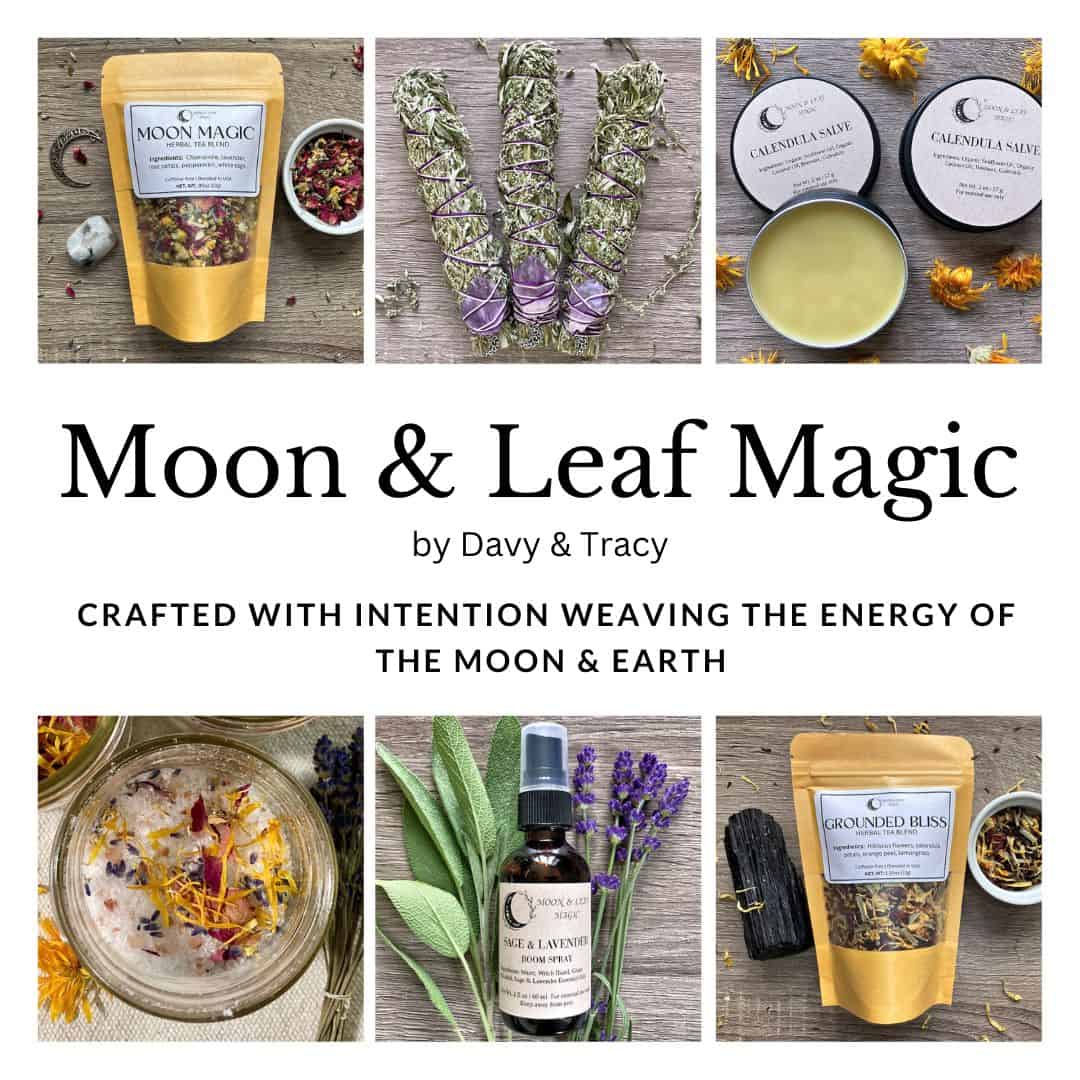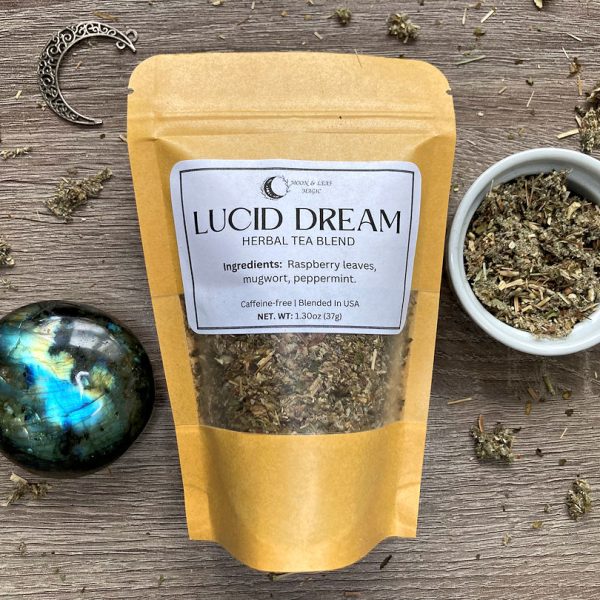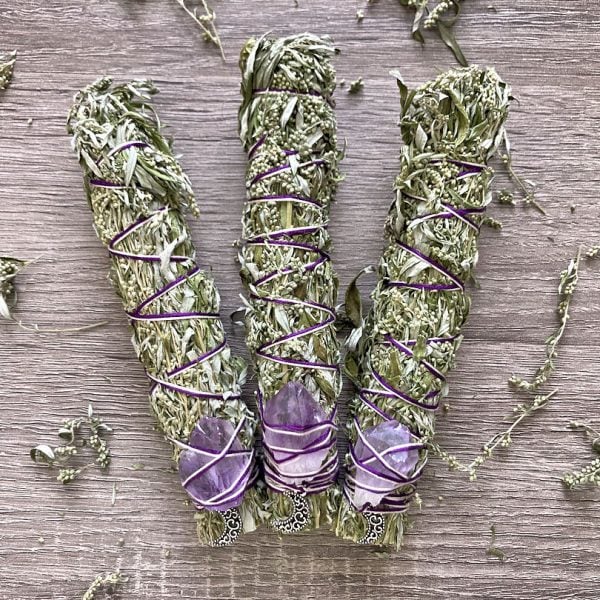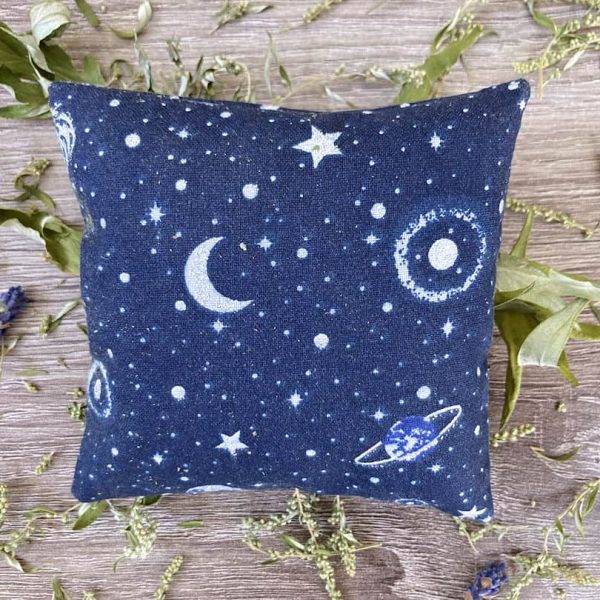
My introduction to mugwort (Artemisia vulgaris) happened in the back yard of my first house. It grew in a giant clump, towering about as tall as I am, with its silver-green leaves creating quite a show on a sunny, breezy August afternoon.
While it looked like a weed, the sweet, herbaceous fragrance kept me from pulling it out of the garden bed immediately. I didn’t know what it was, but I enjoyed the fragrance.
The following spring, I ripped most of it out to plant something “prettier”. (I still shudder at my own ignorance then!)
That was before my interest in herbalism and magic took off, and fortunately for me, mugwort is tenacious. Once it’s planted, it will be in that spot forever.
Meet Mugwort
Mugwort is a flowering plant in the Artemisia genus, a member of the daisy family Asteraceae.
There are quite a few species of mugwort, but the one that grows in my garden is Common Mugwort (Artemisia vulgaris). It is related to, but not the same plant as, Artemisia absinthium, the species of mugwort traditionally used to make Absinthe.
Typically growing 4-6 feet tall, common mugwort flowers in the late summer with clusters of tiny whiteish flowers with hints of dark red.
The leaves are dark green on top, with whitish hairs on the underside giving it a silvery appearance on the backside of the leaf.

Common mugwort typically grows in clumps that spread out through underground rhizomes – which can make in a noxious weed if it’s growing near or in a cultivated garden.
Both the leaves and flowers have a sweet, herbaceous aroma that I enjoy.
Common mugwort is know by many different names including chrysanthemum weed, wild wormwood, riverside wormwood, sailor’s tobacco, felon herb, and St. John’s Plant (not to be confused with St. Johns Wort.)
Magical Properties & Associations
Mugwort is typically associated with dreaming, divination, and protection.
Lucid Dreaming: Mugwort is said to promote vivid dreams, or even lucid dreaming.
Divination & Intuition: Mugwort is said to boost psychic and intuitive abilities, and is recommended before and during working with tarot, oracle cards, runes, or other divinatory practices.
Protection: Mugwort has had a long association with protection as it was used medicinally for a variety of ailments. It was used by Medieval Christians, who called it St. Johns Plant, to protect against evil, provide safety during travel, and promote good luck.
The Moon & Lunar Magick: Mugwort is associated with the moon and is often used in moon magic and working with the lunar phases.
Mugwort likely gets its association with the moon due to its use in dream work and divination, and the silvery leaves suggest moonlight.
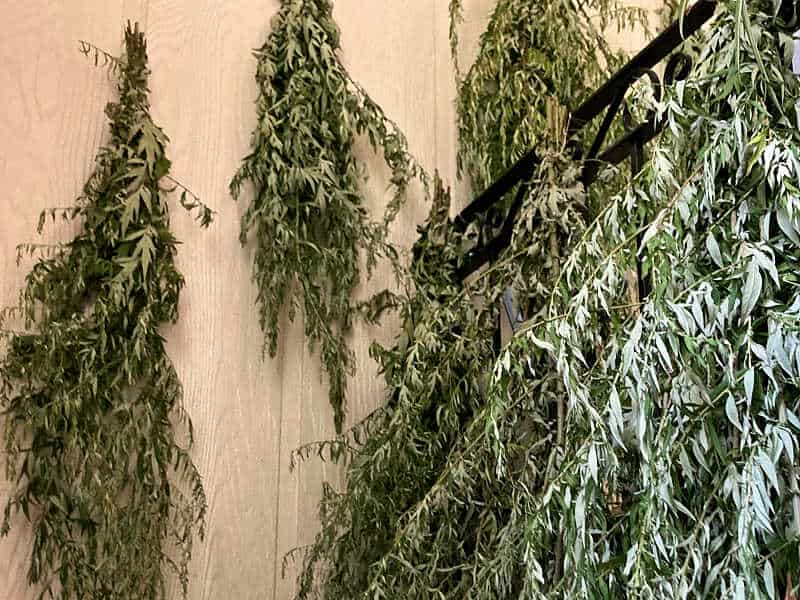
Astrological Associations: I generally associate Mugwort with the sign of Virgo. The genus, Artemisia, is named after the Greek goddess Artemis, who was often portrayed as a virgin.
I also work with mugwort during Libra and Scorpio season – particular during the new moon in Libra and new moon in Scorpio.
Wheel Of The Year: I often harvest mugwort from my garden between Lughnasadh (August 2) and Mabon (the Autumn Equinox).
Due to mugwort’s association with dreams, divination, intuition, and protection, it is well suited for crafting with during Samhain.
The Crone: Some magical practitioners refer to mugwort as Crone’s Wort. The silver-gray undersides of the leaves and the fact that it blooms late in the season, to some, suggest this plant corresponds with the crone aspect of the goddess.
How To Work With Mugwort

There are many ways to use mugwort.
I will not get into the medical uses for mugwort as this article is more focused on the magical uses.
Smoke Cleansing & Incense: Mugwort can be used for smoke cleansing, and is a much more eco-friendly and sustainable alternative to white sage (Salvia apiana).
Mugwort can be dried and bundled into smoke wands (aka “smudge sticks”), or combined with other smoke cleansing herbs like lavender and sage.
A smoke cleansing wand made with mugwort is perfect to purify and sanctify a ritual space before any magical working. Use mugwort smoke during moon rituals, or to cleanse/purify divinatory tools like tarot/oracle decks, etc…
We carry Mugwort smoke wands in our shop.

Dream Pillows & Sachets: A popular way to use mugwort is to stuff a small pillow or sachet with dried mugwort leaves and flower buds.
Typically called a “dream pillow”, place the mugwort pillow beneath your regular pillow when you sleep to promote lucid dreaming and gain insight from your dreams.
Keep a dream diary on your nightstand so that you can immediately record your dreams when you wake up, and then reflect on them throughout the day.
Check out our Mugwort Dream Pillows in our shop!
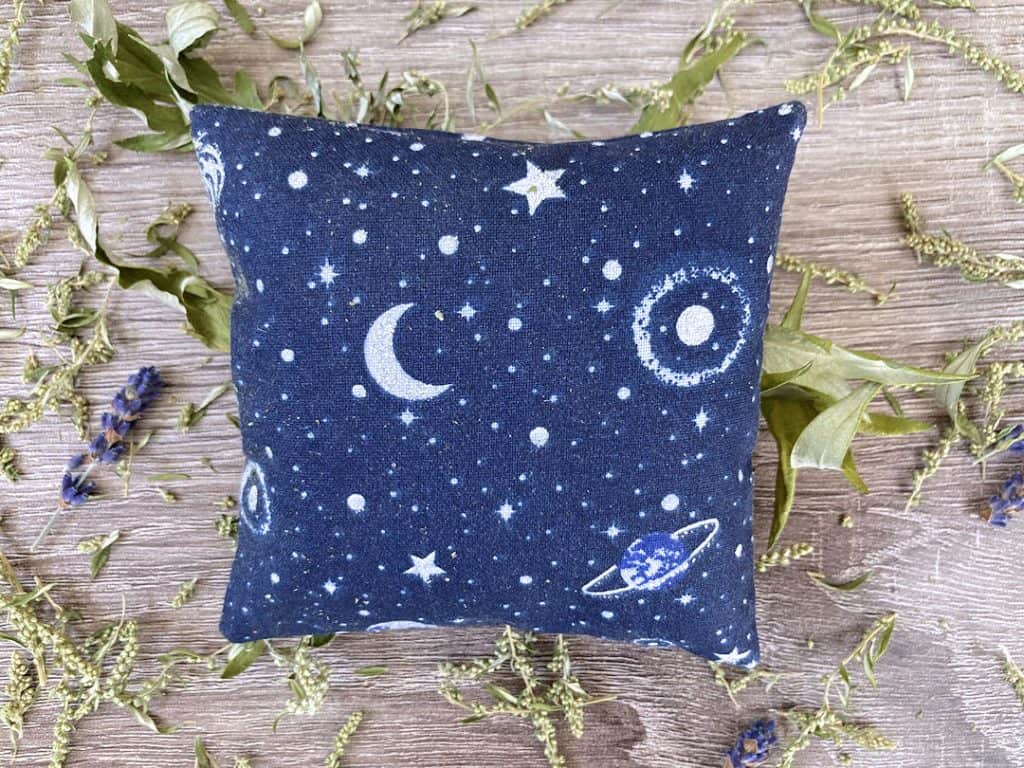
Mugwort Oil: Infused oils can be made using dried mugwort. Dab some on your third eye before working with tarot or oracle cards. Roll some on before bed to promote dreaming.
Wands: Mugwort grows thick, woody stems that make a nice wand. Cast a circle before bed, or use it to direct energy during moon spells.

Kindling: Mugwort stems can also be gathered, dried, and used for kindling for a Samhain bonfire, or anytime you want to add a little magick to your fire.
Charms & Spells: Mugwort is perfect to use for any spells or magical workings related to new moon intentions, protection, dreams, divination, or intuition.
Dried mugwort can be used in spell jars, included in sachets, or tied with crystals/charms and hung in your home wherever a little protection and/or magic is needed.
Tea: Mugwort can be brewed as a tea, and it’s available commercially as well (we carry some Lucid Dreaming tea in our shop that contains mugwort.)
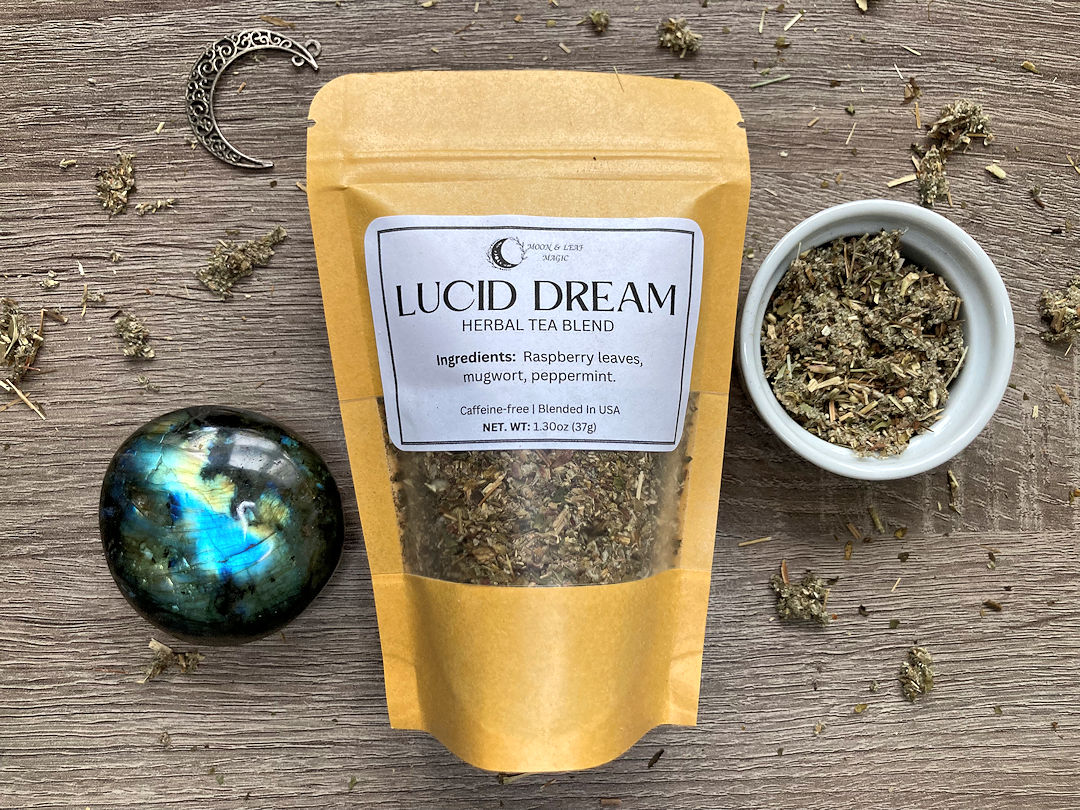
Smoking: Mugwort can be smoked, or added to herbal smoking blends. This is said to promote relaxation and the vivid dreams that mugwort can induce. Mugwort is not a psychedelic, and won’t get you high.
Crystal Pairings: Black tourmaline, moonstone, selenite, satin spar, amethyst, clear quartz, smoky quartz, and labradorite are all crystals that I work with when also working with mugwort.
Precautions For Using Mugwort
Mugwort is often added to teas, and can be used topically (in poultices, salves, infused oils).
Mugwort is used culinarily, and in traditional medicine. It’s also used in teas. Normal amounts of mugwort (like in teas) are typically fine. Mugwort does contains thujone, which has low toxicity to humans but can become problematic (like any herb) if it is used to excess.
Pregnant and nursing women are advised to avoid mugwort and mugwort-containing products as it is said to have abortive effects.
As with all herbs, do your research before using. Certain herbs can cause allergic reactions in sensitive individuals. They can exacerbate existing medical conditions, or interfere with medications you take. So it’s important that you read up on it and take into consideration any health issues, sensitivities, allergies, and medications you take before taking any new herb.
When harvesting mugwort for culinary use, be sure that your mugwort is sourced from an area that is not contaminated by pesticides or industrial pollutants. Mugwort is often found in waste places and disturbed ground, so just be aware of potential contaminants in the soil.
Mugwort pollen is a main source of hay fever and allergic asthma. I am very allergic to mugwort pollen, but I find that if I am careful to harvest it before the flowers open (which is recommended), I can craft with it just fine.
Mugwort In The Garden
Mugwort grows just about anywhere, and is often found in parks, roadsides, stream and riverbanks, and other disturbed areas.
Mugwort is not native to North America, but has naturalized here. Because it can take over and outcompete native plants, I do not recommend planting it in or near natural areas.
It can be a serious pest in the garden, tenaciously spreading through underground rhizomes making it nearly impossible to get rid of once it takes root. It can propagate from root fragments, and spreads each year, forming a larger and broader clump.
Mugwort likes to grow in full sun, but will tolerate partial shade. It doesn’t require any special care and has few insect pests.
I have a patch that grows in my yard and I simply let it do its thing and it grows six feet tall!
Harvest just before the flower buds open. For me, that is the last week of August – first week of September in my zone 5 upstate New York garden.

